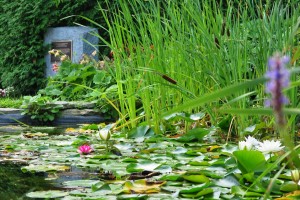
West Island walks
By Robert Frank
www.thesuburban.com
Stroll through the Gate of Remembrance and the tranquil grounds of the National Field of Honour open before your eyes.
Once you pass through the entrance to the largest veterans cemetery in Canada, the scene is dramatic. The final resting place of more than 22,000 Canadian and Allied veterans and their loved ones is unusual for its oneness with nature.
Headstones lie flush with the ground, leaving the natural qualities of the well-landscaped site unblemished.
The untrammelled beauty of the site, as well as the size and historic importance of the cemetery prompted Heritage Canada to declare the National Field of Honour a National Historic Site in 2007.
World War I led to its consecration in 1930, in what had been a Pointe Claire farmer’s field, and today parts of the National Field of Honour also lie in Beaconsfield.
A group of prominent Montrealers, spurred by hospital orderly Arthur Hair, founded what is now known as the Last Post Fund in 1909 to help needy veterans avoid being dumped in a common grave or dissected for medical research.
They created the original Field of Honour, which straddles Notre Dame des Neiges and Mount Royal cemeteries atop the mountain.
After the World War I conflagration, it steadily filled with the conflict’s survivors who, the Last Post Fund noted, tended to have a shorter life expectancy than the general population.
In 1929, the National Assembly passed a law that provided the funds for the Last Post Fund to buy the Pointe Claire land where the National Field of Honour opened in September 1930.
Though it is Canada’s closest counterpart to the United States’ Arlington National Cemetery, few tourists visit the National Field of Honour.
It is out of the way and hard to find: a quarter-mile drive up the private road through Lakeview Cemetery before you reach the Gate of Remembrance. Though the entrance is in Pointe Claire, motorists have to travel along Elm in Beaconsfield to get there.
Getting there by public transit entails a long walk from Cedar Park station on the Rigaud commuter train line.
For those who want a serene spot to remember those who served in World War I, it is worth the detour.
Wander through the graves and you will witness Canadian egalitarianism. High-ranking officers lie beside privates. The highly decorated lie beside those with no battle honours. In death, all are equal there.
In recognition that the memorial is truly national, donors from across Canada paid several years ago to construct a water park with pond and fountain, as a reminder that the veterans at rest there come from throughout the country.
Before the Last Post Fund’s ceremony there every first Sunday in June, cadets plant Canadian flags beside every headstone, turning the National Field of Honour into a sea of red and white, punctuated by the occasional American, French, Belgian, British and Polish flags marking the final resting places of Allied veterans.
In recent years, the Last Post Fund also revived Remembrance Day ceremonies at the National Field of Honour, responding to local demand after years of deferring the larger downtown ceremony at Dorchester Square. Last year’s Remembrance Day ceremony was cancelled though, following the sudden death of its main organizer, RCAF Lt.-Col. Yves Martin, prior to the commemoration.
Even without the flags the rest of the year, it’s well worth the visit on a peaceful summer day.











A touching tribute to a beautiful place where we can always remember those who have fought for our freedom.